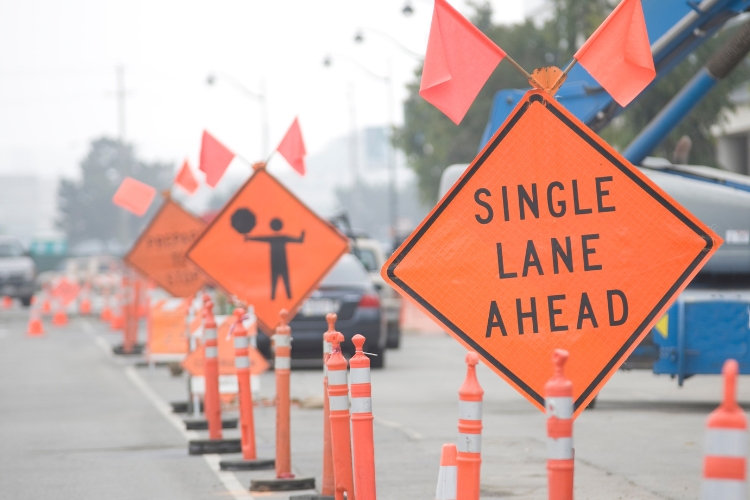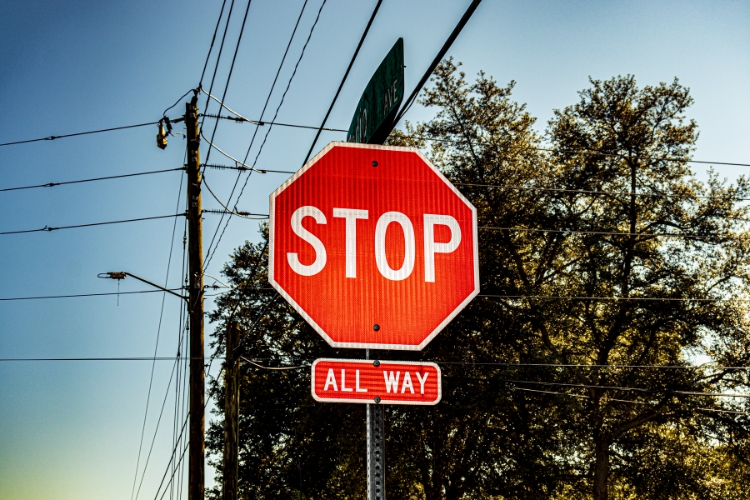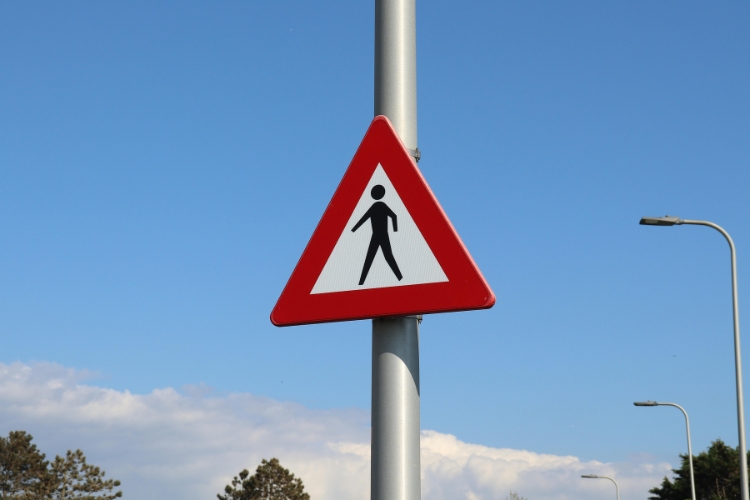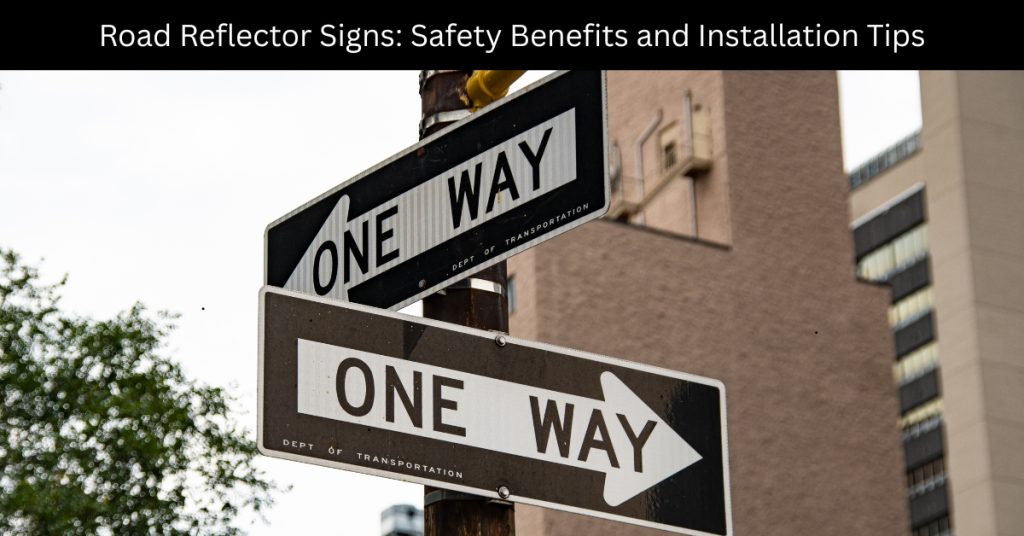Road reflector signs have emerged as one of the most effective safety solutions for modern transportation infrastructure, significantly reducing nighttime accidents by up to 30% through advanced retroreflective technology.
These specialized traffic control devices use microscopic glass beads or prismatic materials to redirect vehicle headlight illumination back to drivers, ensuring maximum visibility in challenging conditions including darkness, rain, and fog.
In Pakistan’s diverse terrain—from busy urban highways to remote mountain passes—properly installed reflective traffic signs serve as critical safety infrastructure that guides millions of daily commuters and long-distance travelers.
This blog article explores the essential safety benefits, installation best practices, maintenance requirements, and economic advantages of implementing effective road reflector sign systems that prioritize people-first safety over mere compliance.
Key Takeaways!
| Aspect | Key Points | Benefits |
|---|---|---|
| Safety Impact | Reduces nighttime accidents by 25-30% | Saves lives, prevents injuries, reduces emergency costs |
| Technology Types | Glass bead, prismatic, fluorescent-enhanced materials | Enhanced visibility across all weather conditions |
| Installation Standards | Proper height (1.5-5.5m), lateral offset (0.3-3.0m) | Optimal light return and traffic clearance |
| Material Grades | Engineering, High-Intensity, Diamond grades | 7-12+ year service life with varying performance levels |
| Maintenance Requirements | Monthly visual inspections, annual performance testing | Sustained effectiveness and maximum ROI |
| Economic Benefits | Initial investment offset by accident reduction savings | Long-term cost-effectiveness through reduced liability |
| Weather Performance | Maintains visibility in rain, fog, and low-light conditions | Consistent safety across Pakistan’s diverse climate |
| Future Integration | Smart technology and advanced material developments | Enhanced performance and automated monitoring capabilities |
Understanding Road Reflector Signs
Road reflector signs are specialized traffic control devices designed with retroreflective materials that bounce light directly back to its source. Unlike conventional signs that simply absorb and scatter light, these advanced safety markers utilize microscopic glass beads or prismatic materials to create a bright, visible surface when illuminated by vehicle headlights.
The technology behind these signs is remarkably sophisticated yet elegantly simple. When light from a vehicle’s headlights strikes the retroreflective surface, it follows a precise optical path that redirects the illumination back toward the driver’s eyes. This phenomenon ensures maximum visibility even in complete darkness, making these signs indispensable for nighttime driving safety.
1. Types of Reflective Materials
Modern road reflector signs employ various retroreflective technologies, each suited for specific applications and environmental conditions:
- Glass Bead Technology: Traditional retroreflective signs use microscopic glass spheres embedded in a binding material. These beads create a wide-angle reflection pattern suitable for most standard traffic applications.
- Prismatic Retroreflection: Advanced signs utilize precisely engineered prismatic surfaces that provide superior brightness and longer-distance visibility. These are particularly effective for high-speed highway applications.
- Fluorescent Enhancement: Some reflector signs combine retroreflective properties with fluorescent materials, providing enhanced visibility during dawn and dusk hours when traditional reflectivity alone may be insufficient.

Critical Safety Benefits of Road Reflector Signs
The implementation of reflective traffic signs delivers measurable safety improvements that extend far beyond simple visibility enhancement. Research conducted by transportation safety organizations worldwide consistently demonstrates the life-saving potential of properly installed retroreflective signage systems.
1. Enhanced Nighttime Visibility
Statistics reveal that approximately 50% of traffic fatalities occur during nighttime hours, despite significantly lower traffic volumes compared to daytime periods. Road reflector signs address this disparity by providing consistent, reliable visibility regardless of ambient lighting conditions. The retroreflective properties ensure that critical information remains clearly visible from appropriate distances, giving drivers adequate time to process information and make necessary adjustments to their driving behavior.
2. Weather Condition Performance
Pakistan’s diverse climate presents numerous challenges for road users, from monsoon rains in the plains to snow and fog in mountainous regions. Reflective traffic signs maintain their effectiveness across various weather conditions, providing crucial guidance when traditional road markings may become obscured or when visibility is compromised by atmospheric conditions.
During heavy rainfall, when road surfaces become reflective and confusing, properly positioned reflector signs help drivers maintain proper lane positioning and identify important navigation points. Similarly, in foggy conditions common in certain regions, the concentrated light return from retroreflective signs can penetrate atmospheric obscuration more effectively than conventional signage.
3. Accident Reduction Statistics
Transportation authorities that have implemented comprehensive reflective signage programs report significant reductions in nighttime accidents. Studies indicate that properly maintained retroreflective signs can reduce nighttime crashes by up to 25-30% on highways and arterial roads. These improvements translate directly into saved lives, reduced injuries, and substantial economic benefits through decreased accident-related costs.
4. Driver Reaction Time Improvement
The enhanced visibility provided by road reflector signs increases the distance at which drivers can detect and process important traffic information. This extended detection distance translates into improved reaction times, allowing drivers to make safer, more informed decisions. For highway applications, this improvement can be the difference between a safe lane change and a dangerous last-minute maneuver.

Highway Markers and Their Specific Applications
Highway markers represent one of the most critical applications for retroreflective technology, given the high speeds and extended distances involved in highway travel. These specialized signs must perform reliably across various conditions while providing information that can be processed quickly by drivers traveling at highway speeds.
1. Delineation and Guidance Systems
Highway reflector signs serve multiple delineation functions, from simple lane marking enhancement to complex interchange guidance systems. Reflective markers placed along guardrails, median barriers, and roadway edges provide continuous visual guidance that helps drivers maintain proper positioning even in challenging conditions.
- Curve Delineation: On highways with significant horizontal curves, retroreflective markers placed at regular intervals help drivers anticipate and navigate turns safely. These markers are particularly crucial on rural highways where ambient lighting is minimal.
- Interchange Navigation: Complex highway interchanges require sophisticated signage systems that remain visible and legible from appropriate distances. Retroreflective exit signs, direction indicators, and lane designation markers work together to provide clear navigation guidance for drivers making high-speed directional changes.
2. Distance and Speed Considerations
Highway applications require careful consideration of sight distances and approach speeds when designing retroreflective signage systems. Signs must be visible from distances that allow adequate reaction time at highway speeds, typically requiring visibility from 300-500 meters depending on the specific application and local speed limits.
The retroreflective performance requirements for highway signs are correspondingly higher than those for urban applications. Materials selected for highway use must maintain their reflective properties across extended periods while withstanding the harsh environmental conditions associated with high-speed traffic exposure.
Installation Guidelines and Best Practices
Proper installation of road reflector signs requires careful attention to multiple factors that influence both immediate effectiveness and long-term performance. The installation process involves site assessment, material selection, positioning optimization, and ongoing maintenance planning.
1. Site Assessment and Planning
Before installing reflective traffic signs, comprehensive site assessment ensures optimal placement for maximum safety benefit. This assessment should consider traffic patterns, existing lighting conditions, geometric constraints, and environmental factors that may influence sign performance.
- Traffic Volume Analysis: Understanding traffic patterns helps determine the appropriate type and intensity of retroreflective materials needed for each installation location. High-volume highways require more durable materials with superior reflective performance compared to low-volume rural roads.
- Sight Distance Evaluation: Proper sight distance analysis ensures that signs are positioned where they can be seen from appropriate distances given local speed limits and traffic conditions. This analysis must account for vertical and horizontal curves, hills, and other geometric features that may affect visibility.
- Environmental Considerations: Local environmental conditions, including prevalent weather patterns, dust levels, and potential for vandalism or damage, influence both material selection and maintenance requirements.

2. Mounting and Positioning Standards
| Sign Type | Mounting Height | Lateral Offset | Visibility Distance |
|---|---|---|---|
| Warning Signs | 1.5-2.1 meters | 0.6-1.8 meters | 150-300 meters |
| Regulatory Signs | 1.5-2.1 meters | 0.6-1.2 meters | 100-200 meters |
| Guide Signs | 2.1-5.5 meters | 0.6-3.0 meters | 200-500 meters |
| Delineator Posts | 1.2-1.5 meters | 0.3-0.6 meters | 100-150 meters |
Proper mounting height ensures optimal light return while maintaining clearance requirements for pedestrians and maintenance activities. The lateral offset distance provides adequate clearance from traffic while maintaining sign effectiveness.
3. Material Selection Criteria
Selecting appropriate retroreflective materials requires balancing performance requirements with environmental conditions and maintenance capabilities. Different grades of retroreflective materials offer varying levels of performance and durability:
- Engineering Grade: Suitable for low-speed urban applications with moderate durability requirements. These materials typically provide 7-10 years of effective service life under normal conditions.
- High-Intensity Grade: Designed for highway applications requiring superior brightness and longer-distance visibility. These materials offer 10-12 years of service life and maintain effectiveness under more demanding conditions.
- Diamond Grade: Premium retroreflective materials offering maximum brightness and extended service life. Particularly suitable for critical safety applications and locations with challenging environmental conditions.
Maintenance and Longevity Considerations
Effective maintenance programs are essential for ensuring continued performance of retroreflective signage systems. Regular inspection and maintenance activities preserve the safety benefits while maximizing the return on infrastructure investment.
1. Regular Inspection Protocols
Systematic inspection programs should evaluate both the physical condition of signs and their retroreflective performance. Visual inspections can identify obvious damage, while retroreflectometer measurements provide quantitative assessment of optical performance.
- Monthly Visual Inspections: Basic visual assessments can identify signs requiring immediate attention due to damage, obstruction, or obvious deterioration. These inspections should focus on critical safety locations and high-traffic areas.
- Annual Performance Testing: Comprehensive retroreflective performance testing using calibrated instruments ensures that signs continue to meet minimum performance standards. Signs failing to meet standards should be scheduled for replacement or refurbishment.
2. Cleaning and Restoration Procedures
Regular cleaning maintains optimal retroreflective performance by removing accumulated dirt, dust, and other contaminants that can reduce light return. Proper cleaning procedures preserve the integrity of retroreflective materials while restoring maximum brightness.
- Gentle Cleaning Methods: Soft brushes and mild detergent solutions effectively remove most contaminants without damaging retroreflective surfaces. High-pressure washing should be avoided as it can damage delicate retroreflective elements.
- Restoration Techniques: Some retroreflective materials can be restored through specialized cleaning and treatment processes that extend service life beyond normal expectations.

Cost-Benefit Analysis and Economic Impact
The economic benefits of properly implemented retroreflective signage systems extend far beyond the initial installation costs. Comprehensive cost-benefit analyses demonstrate substantial returns on investment through accident reduction, maintenance savings, and improved traffic flow efficiency.
1. Initial Investment Considerations
While retroreflective signs require higher initial investment compared to conventional signage, the long-term benefits justify the additional expense. The superior durability and performance of quality retroreflective materials reduce replacement frequency and maintenance requirements over the sign’s service life.
2. Long-term Economic Benefits
The accident reduction benefits alone typically justify the investment in retroreflective signage within the first few years of installation. Additional benefits include reduced liability exposure, improved traffic flow efficiency, and enhanced community safety reputation.
- Accident Cost Savings: Each prevented accident generates substantial cost savings through reduced emergency response costs, medical expenses, property damage, and productivity losses.
- Maintenance Efficiency: High-quality retroreflective signs require less frequent replacement and maintenance compared to conventional alternatives, reducing long-term operational costs.
Future Developments and Smart Integration
The future of road reflector signs lies in smart integration with emerging transportation technologies and enhanced performance materials. These developments promise even greater safety benefits and operational efficiency.
1. Smart Sign Technology
Integration of electronic components with traditional retroreflective signs creates opportunities for dynamic messaging, remote monitoring, and automated maintenance scheduling. These smart systems can provide real-time information while maintaining the reliability of passive retroreflective technology.
2. Advanced Materials Research
Ongoing research into new retroreflective materials promises improved performance, extended service life, and enhanced environmental resistance. These developments will further improve the cost-effectiveness and safety benefits of retroreflective signage systems.
Conclusion
Road reflector signs represent a critical component of modern transportation safety infrastructure, providing essential visibility enhancement that saves lives and reduces accidents. For Pakistan’s diverse transportation network, from urban streets to mountain highways, properly implemented retroreflective signage systems offer proven safety benefits that justify their investment and maintenance requirements.
The success of any retroreflective signage program depends on careful planning, proper installation, and ongoing maintenance commitment. By following established guidelines and best practices, transportation authorities can maximize the safety benefits while ensuring long-term cost-effectiveness. As traffic volumes continue to grow and transportation demands increase, the importance of reliable, effective road safety signs will only continue to expand, making retroreflective technology an indispensable element of safe transportation infrastructure.
The investment in quality road reflector signs and highway markers represents an investment in community safety, economic efficiency, and transportation system reliability that will continue to provide benefits for years to come.
FAQs
Q1: How much do road reflector signs reduce nighttime accidents?
Road reflector signs can reduce nighttime crashes by 25-30% on highways and arterial roads according to transportation safety studies. This significant improvement occurs because retroreflective technology enhances visibility from 300-500 meters away, giving drivers adequate reaction time to process information and make safe driving decisions. The enhanced visibility is particularly crucial since 50% of traffic fatalities occur during nighttime hours despite lower traffic volumes.
Q2: What types of reflective materials work best for Pakistani road conditions?
For Pakistan’s diverse climate and terrain, High-Intensity and Diamond Grade retroreflective materials perform best. High-Intensity grade offers 10-12 years service life and superior brightness for highways, while Diamond Grade provides maximum performance for critical safety locations. These materials maintain effectiveness across monsoon rains, dust storms, fog, and temperature variations common throughout Pakistan’s regions, from coastal areas to mountain passes.
Q3: How often should road reflector signs be maintained and inspected?
Road reflector signs require monthly visual inspections to identify damage or obstruction, plus annual performance testing using calibrated retroreflectometers to measure light return effectiveness. Regular cleaning with soft brushes and mild detergent maintains optimal performance by removing dust and contaminants. Signs failing to meet minimum retroreflective standards should be immediately scheduled for replacement to ensure continued safety benefits.
Q4: What is the cost-benefit ratio of installing reflective traffic signs?
The initial higher investment in quality retroreflective signs typically pays for itself within 2-3 years through accident reduction savings alone. Each prevented accident saves substantial costs in emergency response, medical expenses, property damage, and productivity losses. Additionally, high-quality retroreflective signs require less frequent replacement and maintenance compared to conventional signs, reducing long-term operational costs while improving overall transportation safety and community welfare.

